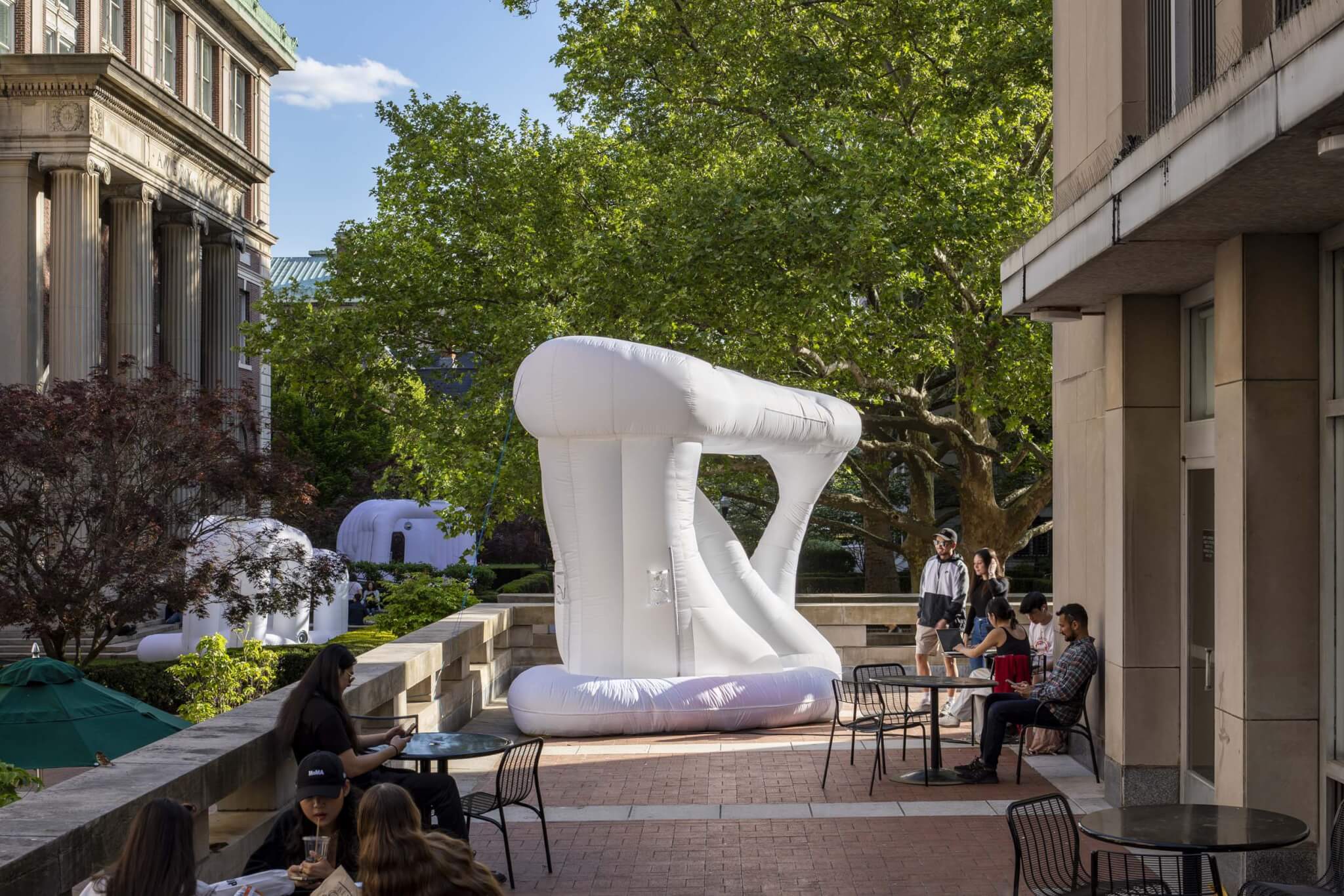At Columbia GSAPP three inflatable pavilions light up using solar power
On the grounds of Columbia University three, oversized inflatable sculptures light up using solar power. The works are the latest iteration of “The Outside In Project”, a seminar course hosted by the Columbia University Graduate School of Architecture, Planning and Preservation (GSAPP). Goo, Hug, and Worm, as the pieces are named, are situated in various locations on the South and North Lawns of Avery Hall Hug and perched on the southeast terrace of Uris Hall.
These installations mark the fourth iteration of the seminar, an ongoing collaborative initiative, directed by faculty Laurie Hawkinson and Galia Solomonoff, to design, build, and program a temporary pavilion structure. Past iterations have included the construction of Web (2022), Avery Spot (2021), and Bob (2011)


The Spring 2023 edition of the seminar explored bio-based and recycled material options for the pavilions’ skin, as well as research into photovoltaic (PV) technologies, which were used to generate power for the embedded lighting system. Throughout the course the students considered these topics and technologies, and experimented with different prototypes and methods of production to achieve the final forms, while also paying mind to New York State building codes and Columbia University regulations.
While each of the three objects takes on a unique form they all provide students, faculty, and visitors with a place to relax and recharge—not only themselves but also electronic devices, as each structure is equipped with outlets for charging. During the day they are all the same shade of white, but after dusk they each glow donning shades of red, yellow, pink, and green. Photovoltatic panels located on each of the pieces harvest sunlight and power the embedded LED lighting systems, charging ports, while also powering the inflation system—an effort that also minimized manufacturing costs.


The shape for each of the works was informed by conceptual ideas: Worm is based on the concept of a “continuous spline”, Hug takes on the form of rounded passageway, and organic shapes characterize Goo, which is topped with a“cloud-like canopy.” Within Hug, as it name suggests, there are squishy “huggable” components made from recycled foam and donated clothing that will be brought to a local shelter when taken down.
Goo, Hug, and Worm offer a safe, calm space for students during the final hectic stretch of the academic year. They will remain on view through June 1.





